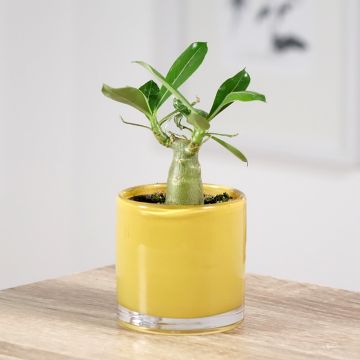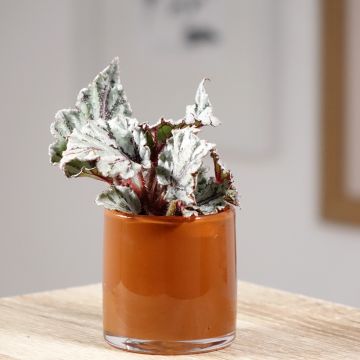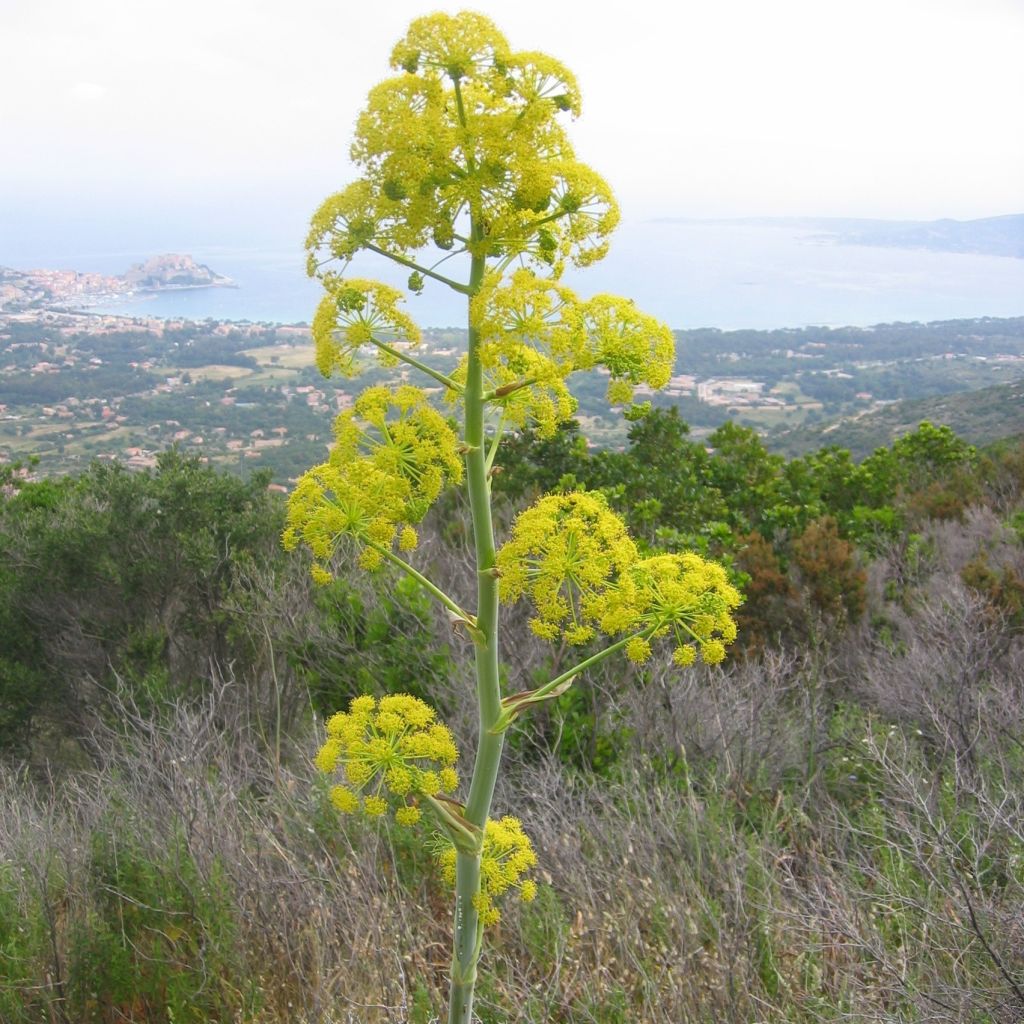

Ferula communis - Giant Fennel
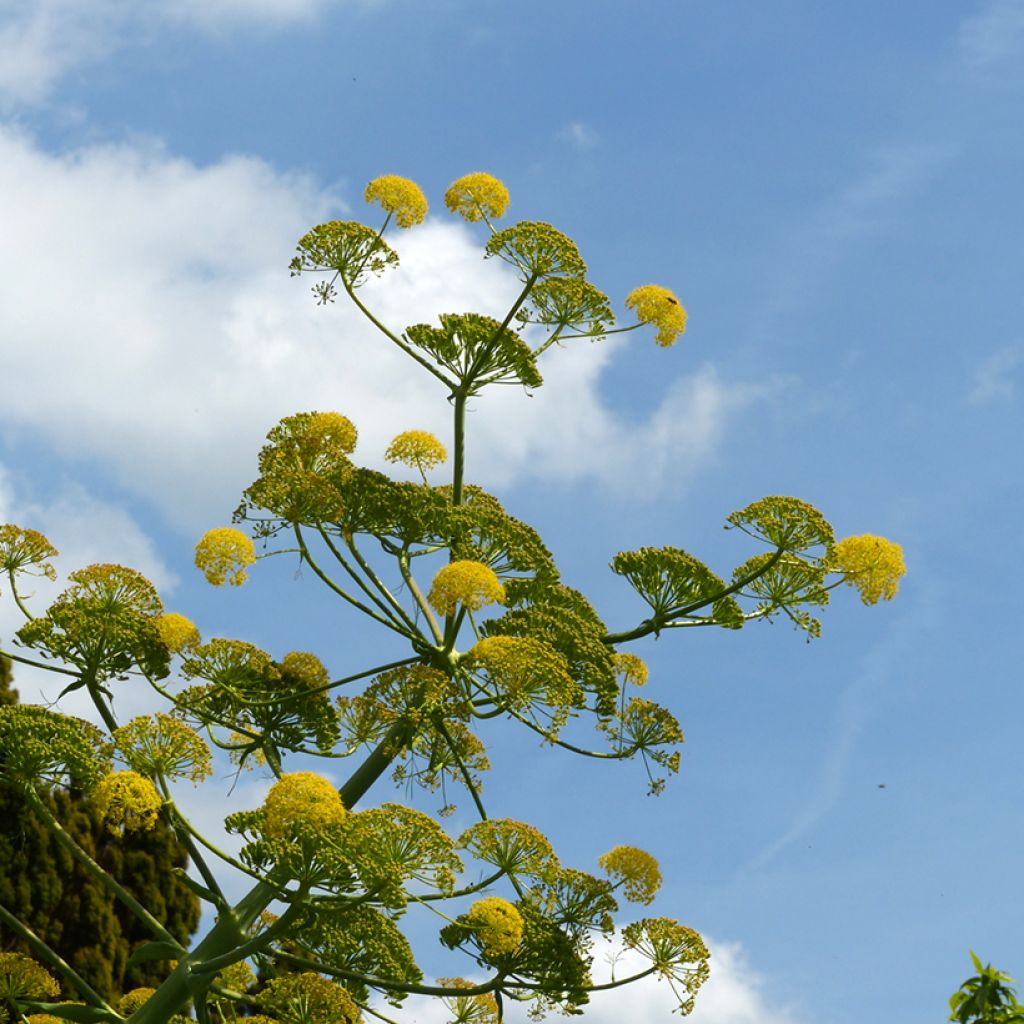

Ferula communis - Giant Fennel


Ferula communis - Giant Fennel


Ferula communis - Giant Fennel
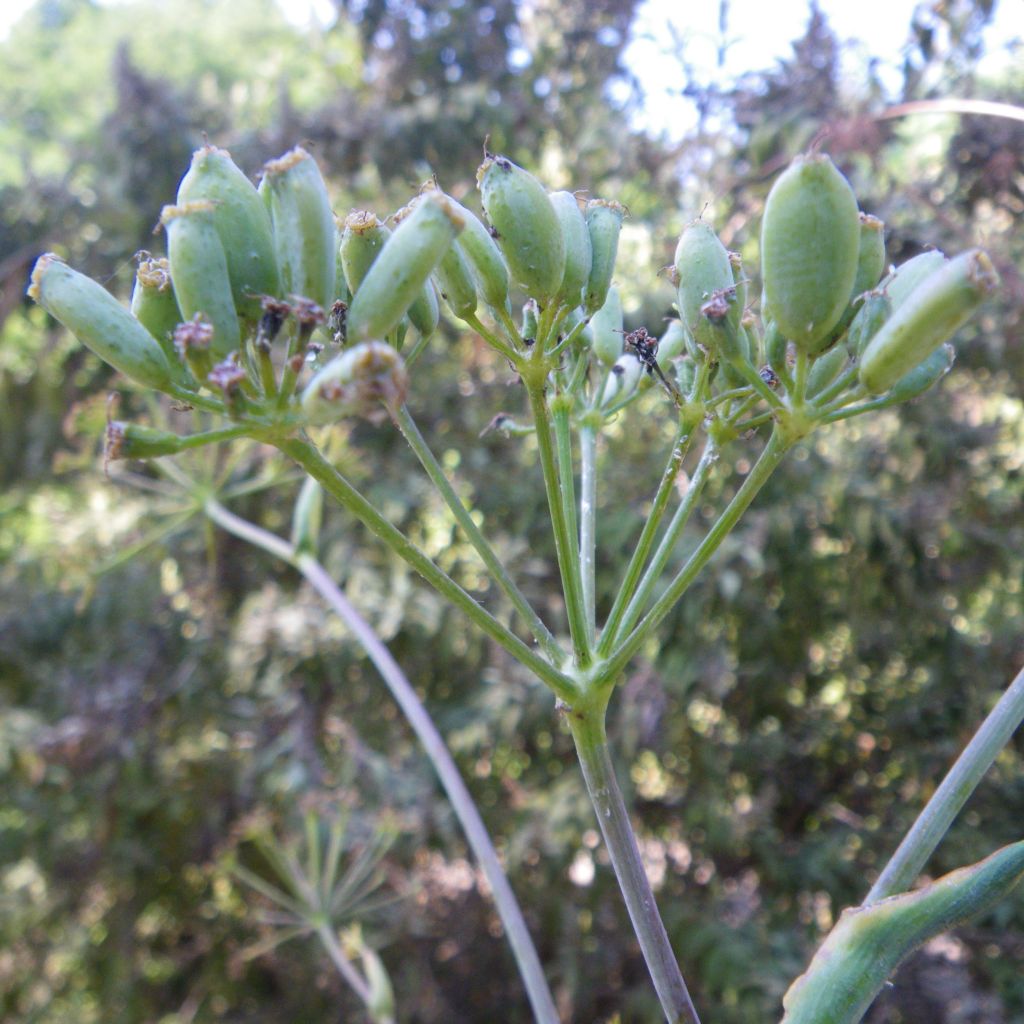

Ferula communis - Giant Fennel
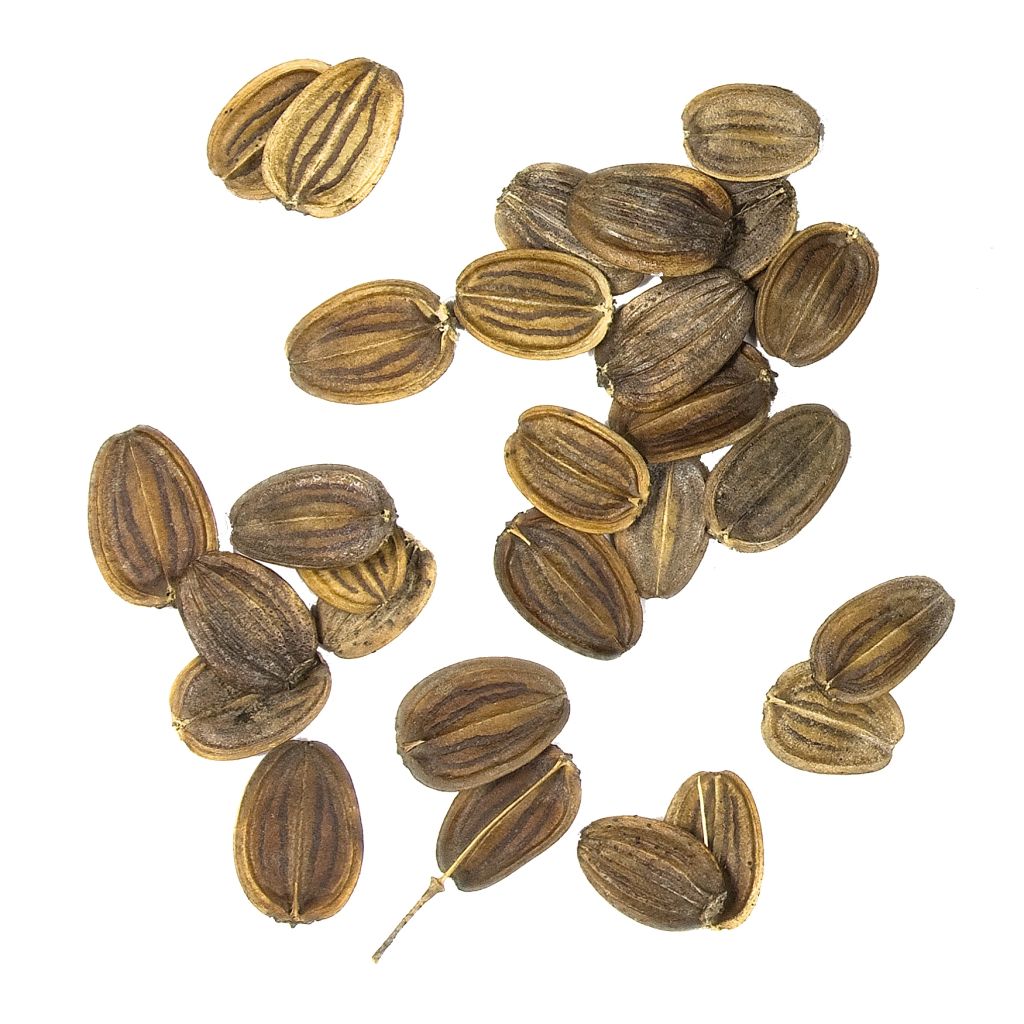

Ferula communis - Giant Fennel
Ferula communis - Giant Fennel
Ferula communis
Giant Fennel
Very disappointed, a little young plant of barely 5 cm (2in) that looks like nothing. That's an expensive young plant! I won't order young plants in buckets anymore. On the other hand, your bushes are doing well.
Valérie, 01/08/2022
Why not try an alternative variety in stock?
View all →This plant carries a 12 months recovery warranty
More information
We guarantee the quality of our plants for a full growing cycle, and will replace at our expense any plant that fails to recover under normal climatic and planting conditions.
From 7,90 € for pickup delivery and 6,90 € for home delivery
Express home delivery from 8,90 €.
Would this plant suit my garden?
Set up your Plantfit profile →
Description
The Ferula communis, also known as Common Ferula or Grande Ferula, is an architectural plant, with rapid growth, a spectacular and very robust plant whose giant inflorescence will bring a lot of exoticism to lush flowerbeds, or on the contrary a wild touch to the too strict areas of the garden. In spring, a powerful floral stem emerges from the ground, quickly lengthening and branching out, bearing large hemispherical umbels adorned with bright yellow flowers in June. It emerges from a beautiful rosette of finely cut leaves, resembling a giant fennel. This ferula prefers sun and well-drained soils.
The Ferula communis is a large perennial plant with tuberous rhizomes belonging to the Apiaceae family, just like parsley, celery, and carrot. Southern Europe, Asia Minor, and North Africa are the birthplaces of this ferula, which grows spontaneously on sunny slopes in the south of France: in Provence, Languedoc, Roussillon, and Corsica. The plant will reach 60 to 80 cm (24 to 32in) in all directions for the foliage. The leaves, finely divided into linear leaflets, light in appearance, dark green in color, form a beautiful rosette that emerges from the ground in autumn, with the return of rain. Flowering occurs on mature plants, several years old. Piercing directly from the ground in spring, the sturdy and massive floral stem, brown-mauve-violet, rises up to 2m (7ft)-2.50m (8ft). In May-June, sometimes in July depending on the climate, large umbels appear along this stem, each bearing hundreds of small bright yellow flowers with protruding stamens. The foliage dries up with the arrival of heat and summer drought, and the plant goes dormant. Only the long dry stem remains, branched like a small tree, astonishing in its lightness and resistance. The hollow stem contains a fibrous pith that has the curious property of slowly burning, while the bark is fireproof. In ancient times, it was used to transport fire from one place to another. And in the past, closer to us, its whipping stems were used to "discipline" schoolchildren. Depending on the climate, it can behave like an annual, especially if allowed to bear seeds.
Be enchanted by the ferula, as it is an imposing and light perennial, relatively hardy in porous soil. This exotic-looking plant, with a false agave appearance, becomes spectacular in rich soil, well-drained but remaining moist, emerging from sunny flowerbeds alongside tall thistles like Cynara cardunculus, giant scabious (Cephalaria gigantea), dwarf abelias, creeping ceanothus, yuccas, dwarf conifers, filarias, myrtles, which will ensure the permanence of the summer decor. However, it is very well adapted to poor and rocky soils, very dry in summer, like a large slope reserved for dry soil plants (lavenders, rosemary, cistus, euphorbias, teucriums).
Although it resembles a giant fennel, the ferula is absolutely not edible, on the contrary, and its molecules with anticoagulant properties are particularly feared by shepherds, as they are highly toxic to herbivores. This anticoagulant principle is under study in human medicine. The Ferula galbaniflua, a cousin from Central Asia also known as Gum Ferula or Galbanum, secretes a fragrant resin highly appreciated in perfumery and used in aromatherapy.
Report an error about the product description
Ferula communis - Giant Fennel in pictures
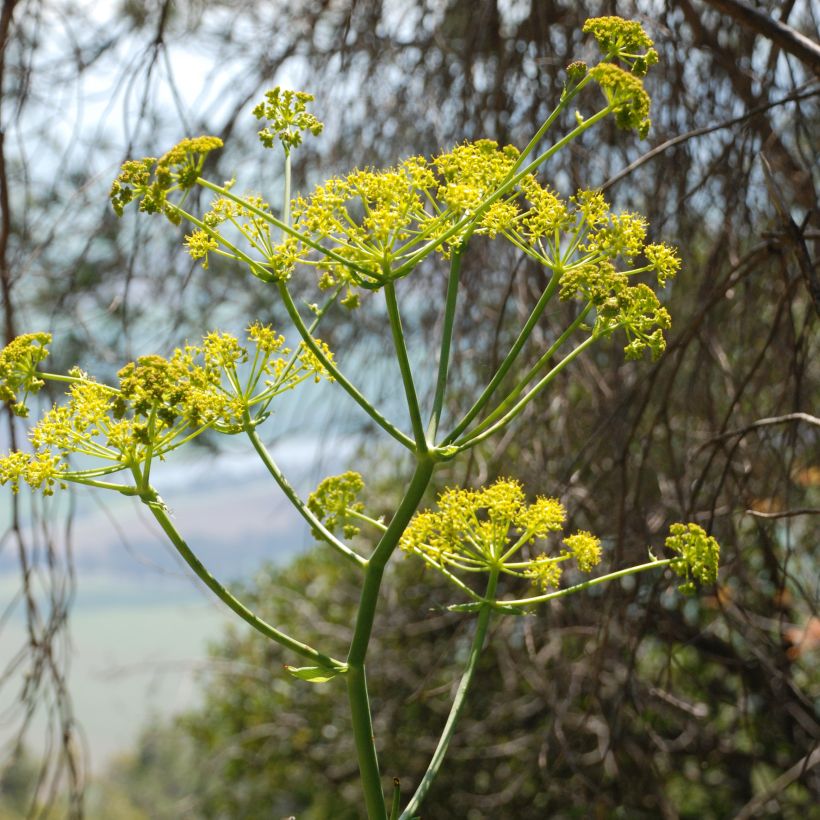



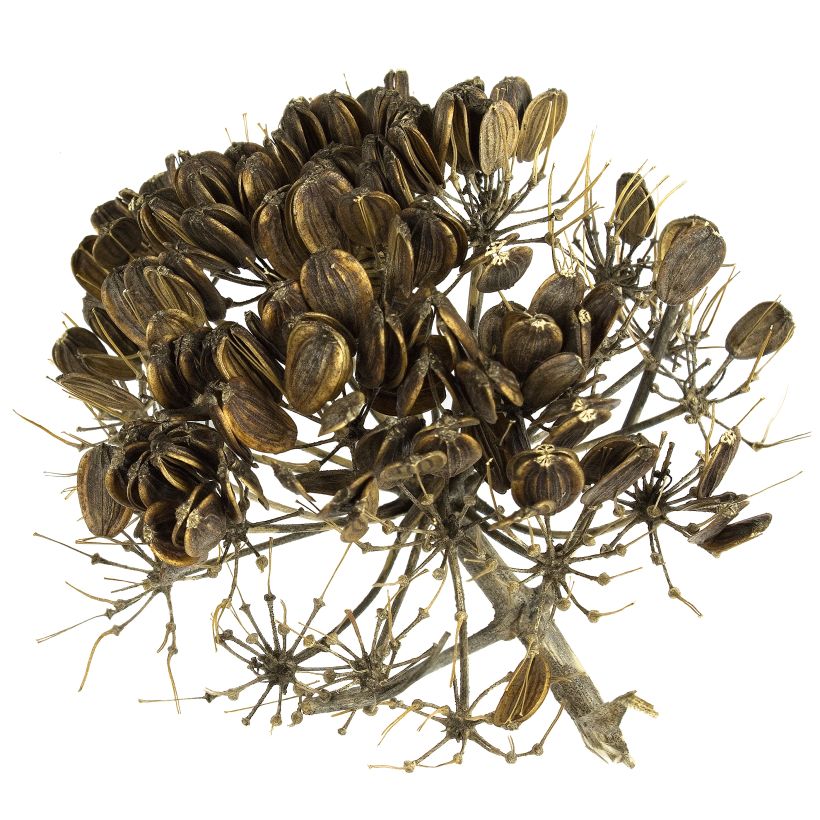

Flowering
Foliage
Plant habit
Botanical data
Ferula
communis
Apiaceae
Giant Fennel
Mediterranean
Planting and care
Plant the Ferula communis in spring or late summer, in a very well-drained, fertile, or even calcareous, rocky, sandy and poor soil. Choose a very sunny exposure for this plant of the Mediterranean. The plant will withstand -10/-12°C in these growing conditions. Its large umbel, very solid, resists windy exposures very well. It is recommended to remove faded umbels to perpetuate the plant. Spontaneous sowings are frequent in light soil, but young seedlings will take several years before flowering.
Planting period
Intended location
Care
-
, onOrder confirmed
Reply from on Promesse de fleurs
Haven't found what you were looking for?
Hardiness is the lowest winter temperature a plant can endure without suffering serious damage or even dying. However, hardiness is affected by location (a sheltered area, such as a patio), protection (winter cover) and soil type (hardiness is improved by well-drained soil).

Photo Sharing Terms & Conditions
In order to encourage gardeners to interact and share their experiences, Promesse de fleurs offers various media enabling content to be uploaded onto its Site - in particular via the ‘Photo sharing’ module.
The User agrees to refrain from:
- Posting any content that is illegal, prejudicial, insulting, racist, inciteful to hatred, revisionist, contrary to public decency, that infringes on privacy or on the privacy rights of third parties, in particular the publicity rights of persons and goods, intellectual property rights, or the right to privacy.
- Submitting content on behalf of a third party;
- Impersonate the identity of a third party and/or publish any personal information about a third party;
In general, the User undertakes to refrain from any unethical behaviour.
All Content (in particular text, comments, files, images, photos, videos, creative works, etc.), which may be subject to property or intellectual property rights, image or other private rights, shall remain the property of the User, subject to the limited rights granted by the terms of the licence granted by Promesse de fleurs as stated below. Users are at liberty to publish or not to publish such Content on the Site, notably via the ‘Photo Sharing’ facility, and accept that this Content shall be made public and freely accessible, notably on the Internet.
Users further acknowledge, undertake to have ,and guarantee that they hold all necessary rights and permissions to publish such material on the Site, in particular with regard to the legislation in force pertaining to any privacy, property, intellectual property, image, or contractual rights, or rights of any other nature. By publishing such Content on the Site, Users acknowledge accepting full liability as publishers of the Content within the meaning of the law, and grant Promesse de fleurs, free of charge, an inclusive, worldwide licence for the said Content for the entire duration of its publication, including all reproduction, representation, up/downloading, displaying, performing, transmission, and storage rights.
Users also grant permission for their name to be linked to the Content and accept that this link may not always be made available.
By engaging in posting material, Users consent to their Content becoming automatically accessible on the Internet, in particular on other sites and/or blogs and/or web pages of the Promesse de fleurs site, including in particular social pages and the Promesse de fleurs catalogue.
Users may secure the removal of entrusted content free of charge by issuing a simple request via our contact form.
The flowering period indicated on our website applies to countries and regions located in USDA zone 8 (France, the United Kingdom, Ireland, the Netherlands, etc.)
It will vary according to where you live:
- In zones 9 to 10 (Italy, Spain, Greece, etc.), flowering will occur about 2 to 4 weeks earlier.
- In zones 6 to 7 (Germany, Poland, Slovenia, and lower mountainous regions), flowering will be delayed by 2 to 3 weeks.
- In zone 5 (Central Europe, Scandinavia), blooming will be delayed by 3 to 5 weeks.
In temperate climates, pruning of spring-flowering shrubs (forsythia, spireas, etc.) should be done just after flowering.
Pruning of summer-flowering shrubs (Indian Lilac, Perovskia, etc.) can be done in winter or spring.
In cold regions as well as with frost-sensitive plants, avoid pruning too early when severe frosts may still occur.
The planting period indicated on our website applies to countries and regions located in USDA zone 8 (France, United Kingdom, Ireland, Netherlands).
It will vary according to where you live:
- In Mediterranean zones (Marseille, Madrid, Milan, etc.), autumn and winter are the best planting periods.
- In continental zones (Strasbourg, Munich, Vienna, etc.), delay planting by 2 to 3 weeks in spring and bring it forward by 2 to 4 weeks in autumn.
- In mountainous regions (the Alps, Pyrenees, Carpathians, etc.), it is best to plant in late spring (May-June) or late summer (August-September).
The harvesting period indicated on our website applies to countries and regions in USDA zone 8 (France, England, Ireland, the Netherlands).
In colder areas (Scandinavia, Poland, Austria...) fruit and vegetable harvests are likely to be delayed by 3-4 weeks.
In warmer areas (Italy, Spain, Greece, etc.), harvesting will probably take place earlier, depending on weather conditions.
The sowing periods indicated on our website apply to countries and regions within USDA Zone 8 (France, UK, Ireland, Netherlands).
In colder areas (Scandinavia, Poland, Austria...), delay any outdoor sowing by 3-4 weeks, or sow under glass.
In warmer climes (Italy, Spain, Greece, etc.), bring outdoor sowing forward by a few weeks.








































